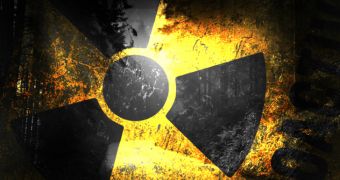Last week, the news broke that China was looking into the possibility of rolling out thorium-fueled nuclear plants in an attempt to solve its air pollution crisis once and for all.
Greenpeace was quick to react to this piece of news and point out the fact that, although thorium might appear the better choice when compared to uranium, pulling the plug on nuclear power altogether and investing in renewables was best.
On its website, Greenpeace admits that, although turning to thorium-fueled nuclear plants might make some sense given the fact that the world's uranium reserves are running low, there are still some problems that must not be ignored.
The organization says that, regardless of whether a nuclear plant relies on thorium or uranium to produce heat and thus generate electricity, the fact remains that no good can come out of piling loads of radioactive materials.
“The risks inherent in nuclear reactors are due to the massive concentrations of radioactive materials and the huge amount of heat they produce (which is actually needed to generate electricity),” Greenpeace says.
“No matter if the fuel is based on uranium or thorium, if it’s solid or liquid, this characteristic alone will inevitably continue to be the Achilles heel of any nuclear reactor,” the organization goes on to argue.
Greenpeace adds that, although it might be true that the radioactive waste produced by thorium reactors does not contain plutonium, this does not make it any more people- and environmentally-friendly.
On the contrary, it would appear that spent thorium fuel has a radiotoxicity higher than that of uranium spent fuel on the long term, i.e. after the first 10,000 years.
This is because spent thorium fuel contains long-lived isotopes such as proactinium-231, which are fairly long-lived, which means that long-term management is in order.
The organization further explains that, in order to be used as a nuclear fuel, thorium must first be converted into a fissile uranium isotope dubbed U-233.
This isotope can be used to make nuclear weapons, which means that thorium is not all that safe either, Greenpeace goes on to argue.
More so given the fact that it was back in 1955 when the United States detonated a nuclear bomb containing U-233 and proved that this isotope could be used for the wrong purposes.
Seeing how thorium-fueled reactors have not yet been built, it is likely that such facilities might pose other risks that the scientific community is not even aware of yet.
“Thorium reactors exist only in blueprints and early experiments, which means there could be other issues not yet detected that would complicate their large scale implementation.”
“In any case, this also means that it would take much longer than a decade before thorium reactors would potentially become available for a larger commercial deployment,” Greenpeace says.
Lastly, it is possible that, thanks to more complicated fuel fabrication and processing, thorium reactors will prove more expensive to build and maintain than uranium-fueled nuclear plants.
Hence, it would perhaps be best if, instead of focusing on nuclear power, world leaders shift their attention to green energy sources and invest in technologies that enable human society to harvest them.
“Let’s not get distracted. Let’s not waste even more time, money and brainpower on trying to make the impossible: a nuclear energy source that would actually really work. The future is renewable, and that’s where we need to go as quickly as possible,” Greenpeace urges.

 14 DAY TRIAL //
14 DAY TRIAL //